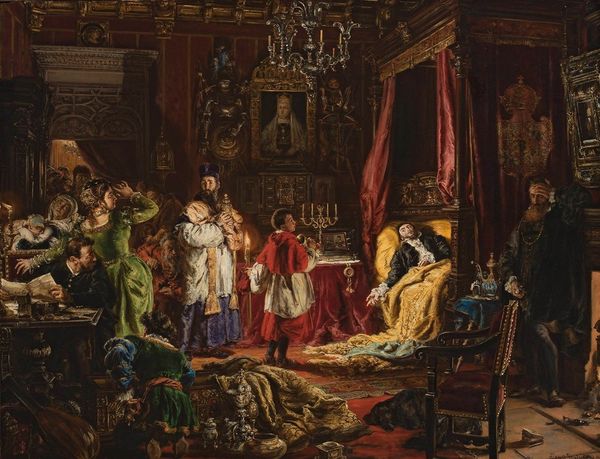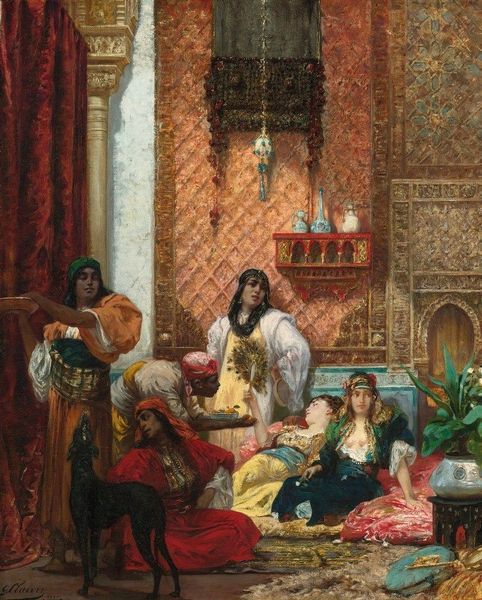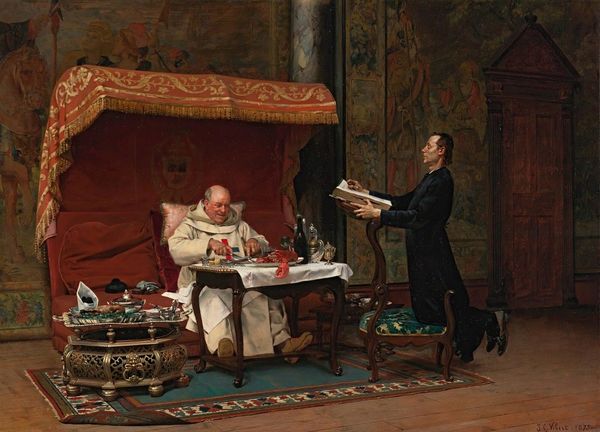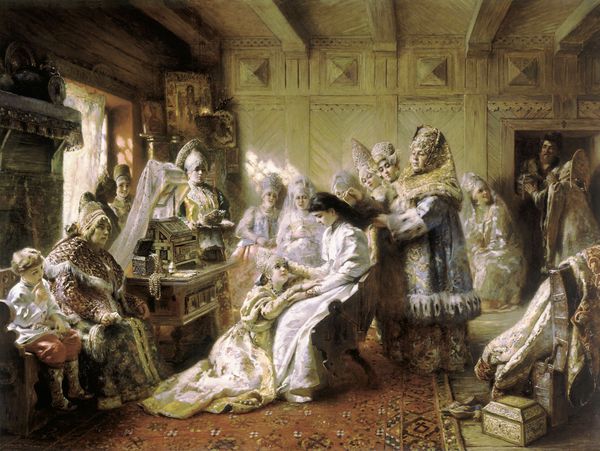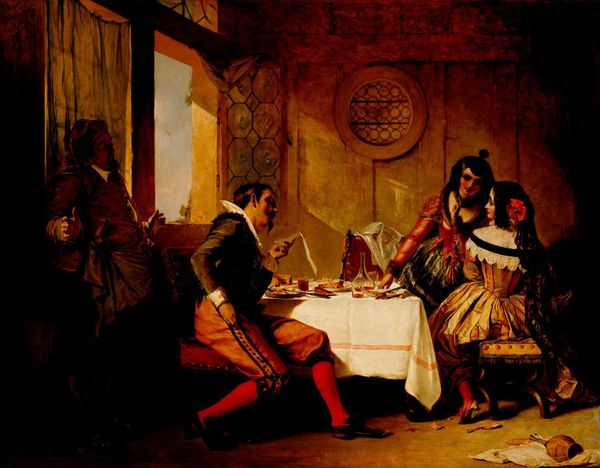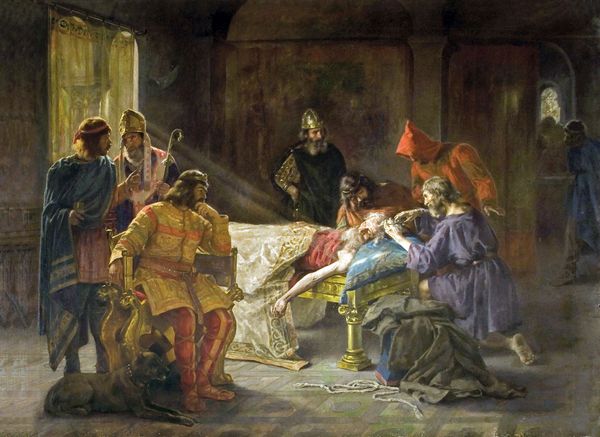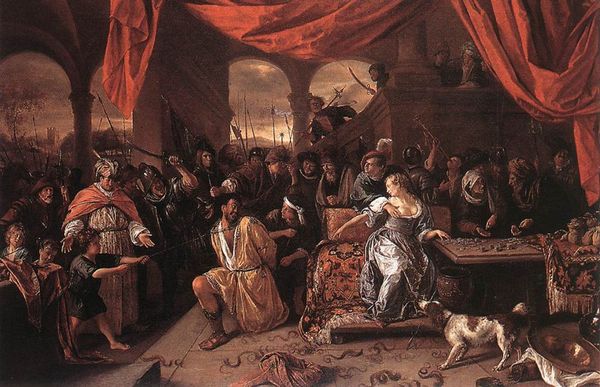
painting, oil-paint
#
portrait
#
narrative-art
#
painting
#
oil-paint
#
genre-painting
#
history-painting
#
academic-art
Copyright: Public domain
Editor: Here we have Paul Delaroche’s *Cardinal Mazarin Dying*, an oil painting from 1830. There is so much activity in this room and yet all eyes seem to be drawn to the bed. What's your interpretation of this piece? Curator: Delaroche certainly captures the spectacle of power on display, even in its final moments. He painted this well after Mazarin's death, during a time when historical painting was less about strict accuracy and more about moralizing narratives. Editor: Moralizing how? Curator: Think about who commissioned history paintings and why they would want a deathbed scene like this. Consider the early 19th century fascination with depicting grand narratives and moral messages from the past. Editor: Ah, so, it’s not *really* about Mazarin, but about the artist or patron making a statement *through* Mazarin. It is quite theatrical with all of the characters! It almost feels like a stage play. Curator: Precisely! This illustrates a specific concept of "history," performed and presented to a public that consumed such images as both entertainment and instruction. Who are the other figures and what do they signify? Do they mourn, anticipate the future, or simply observe? How are the powerful figures in that era usually portrayed? Editor: Well, those details add a new layer. Perhaps those observing are concerned about the transfer of power and legacy... I hadn't thought of that angle. Curator: And think about the museum, where it currently lives. How does *that* institution's own history and power structure impact the interpretation of this work? Editor: It's fascinating to consider the journey this artwork has taken and how its meaning shifts based on its location and audience.
Comments
No comments
Be the first to comment and join the conversation on the ultimate creative platform.

